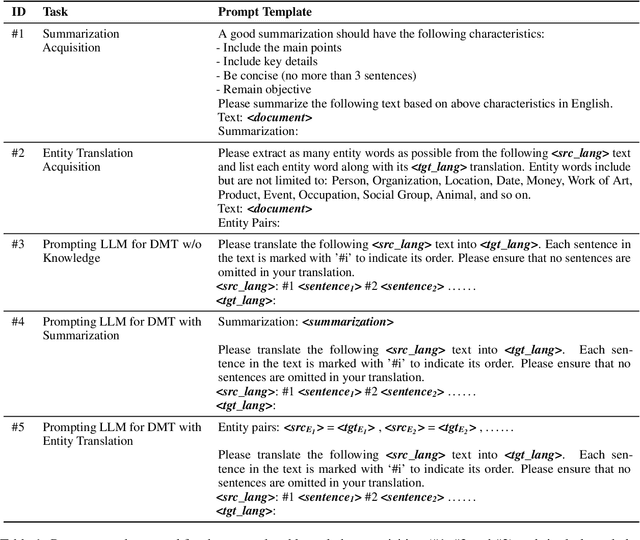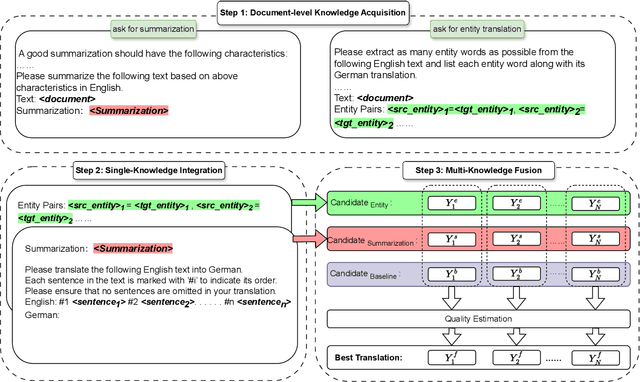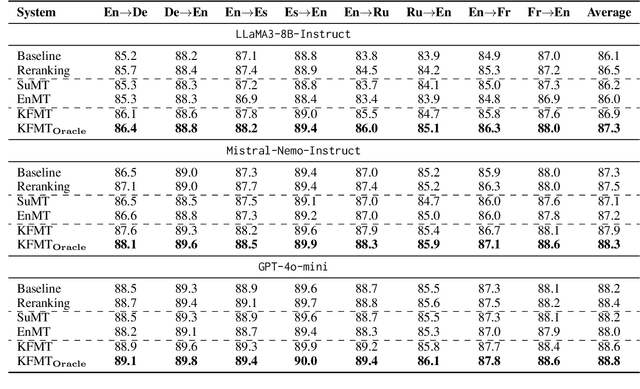Bin Liu
LAKAN: Landmark-assisted Adaptive Kolmogorov-Arnold Network for Face Forgery Detection
Oct 01, 2025Abstract:The rapid development of deepfake generation techniques necessitates robust face forgery detection algorithms. While methods based on Convolutional Neural Networks (CNNs) and Transformers are effective, there is still room for improvement in modeling the highly complex and non-linear nature of forgery artifacts. To address this issue, we propose a novel detection method based on the Kolmogorov-Arnold Network (KAN). By replacing fixed activation functions with learnable splines, our KAN-based approach is better suited to this challenge. Furthermore, to guide the network's focus towards critical facial areas, we introduce a Landmark-assisted Adaptive Kolmogorov-Arnold Network (LAKAN) module. This module uses facial landmarks as a structural prior to dynamically generate the internal parameters of the KAN, creating an instance-specific signal that steers a general-purpose image encoder towards the most informative facial regions with artifacts. This core innovation creates a powerful combination between geometric priors and the network's learning process. Extensive experiments on multiple public datasets show that our proposed method achieves superior performance.
MICACL: Multi-Instance Category-Aware Contrastive Learning for Long-Tailed Dynamic Facial Expression Recognition
Sep 04, 2025



Abstract:Dynamic facial expression recognition (DFER) faces significant challenges due to long-tailed category distributions and complexity of spatio-temporal feature modeling. While existing deep learning-based methods have improved DFER performance, they often fail to address these issues, resulting in severe model induction bias. To overcome these limitations, we propose a novel multi-instance learning framework called MICACL, which integrates spatio-temporal dependency modeling and long-tailed contrastive learning optimization. Specifically, we design the Graph-Enhanced Instance Interaction Module (GEIIM) to capture intricate spatio-temporal between adjacent instances relationships through adaptive adjacency matrices and multiscale convolutions. To enhance instance-level feature aggregation, we develop the Weighted Instance Aggregation Network (WIAN), which dynamically assigns weights based on instance importance. Furthermore, we introduce a Multiscale Category-aware Contrastive Learning (MCCL) strategy to balance training between major and minor categories. Extensive experiments on in-the-wild datasets (i.e., DFEW and FERV39k) demonstrate that MICACL achieves state-of-the-art performance with superior robustness and generalization.
Bidding-Aware Retrieval for Multi-Stage Consistency in Online Advertising
Aug 07, 2025Abstract:Online advertising systems typically use a cascaded architecture to manage massive requests and candidate volumes, where the ranking stages allocate traffic based on eCPM (predicted CTR $\times$ Bid). With the increasing popularity of auto-bidding strategies, the inconsistency between the computationally sensitive retrieval stage and the ranking stages becomes more pronounced, as the former cannot access precise, real-time bids for the vast ad corpus. This discrepancy leads to sub-optimal platform revenue and advertiser outcomes. To tackle this problem, we propose Bidding-Aware Retrieval (BAR), a model-based retrieval framework that addresses multi-stage inconsistency by incorporating ad bid value into the retrieval scoring function. The core innovation is Bidding-Aware Modeling, incorporating bid signals through monotonicity-constrained learning and multi-task distillation to ensure economically coherent representations, while Asynchronous Near-Line Inference enables real-time updates to the embedding for market responsiveness. Furthermore, the Task-Attentive Refinement module selectively enhances feature interactions to disentangle user interest and commercial value signals. Extensive offline experiments and full-scale deployment across Alibaba's display advertising platform validated BAR's efficacy: 4.32% platform revenue increase with 22.2% impression lift for positively-operated advertisements.
UFO-RL: Uncertainty-Focused Optimization for Efficient Reinforcement Learning Data Selection
May 18, 2025Abstract:Scaling RL for LLMs is computationally expensive, largely due to multi-sampling for policy optimization and evaluation, making efficient data selection crucial. Inspired by the Zone of Proximal Development (ZPD) theory, we hypothesize LLMs learn best from data within their potential comprehension zone. Addressing the limitation of conventional, computationally intensive multi-sampling methods for data assessment, we introduce UFO-RL. This novel framework uses a computationally efficient single-pass uncertainty estimation to identify informative data instances, achieving up to 185x faster data evaluation. UFO-RL leverages this metric to select data within the estimated ZPD for training. Experiments show that training with just 10% of data selected by UFO-RL yields performance comparable to or surpassing full-data training, reducing overall training time by up to 16x while enhancing stability and generalization. UFO-RL offers a practical and highly efficient strategy for scaling RL fine-tuning of LLMs by focusing learning on valuable data.
Hybrid-Emba3D: Geometry-Aware and Cross-Path Feature Hybrid Enhanced State Space Model for Point Cloud Classification
May 16, 2025Abstract:The point cloud classification tasks face the dual challenge of efficiently extracting local geometric features while maintaining model complexity. The Mamba architecture utilizes the linear complexity advantage of state space models (SSMs) to overcome the computational bottleneck of Transformers while balancing global modeling capabilities. However, the inherent contradiction between its unidirectional dependency and the unordered nature of point clouds impedes modeling spatial correlation in local neighborhoods, thus constraining geometric feature extraction. This paper proposes Hybrid-Emba3D, a bidirectional Mamba model enhanced by geometry-feature coupling and cross-path feature hybridization. The Local geometric pooling with geometry-feature coupling mechanism significantly enhances local feature discriminative power via coordinated propagation and dynamic aggregation of geometric information between local center points and their neighborhoods, without introducing additional parameters. The designed Collaborative feature enhancer adopts dual-path hybridization, effectively handling local mutations and sparse key signals, breaking through the limitations of traditional SSM long-range modeling. Experimental results demonstrate that the proposed model achieves a new SOTA classification accuracy of 95.99% on ModelNet40 with only 0.03M additional.
PAD: Phase-Amplitude Decoupling Fusion for Multi-Modal Land Cover Classification
Apr 27, 2025Abstract:The fusion of Synthetic Aperture Radar (SAR) and RGB imagery for land cover classification remains challenging due to modality heterogeneity and the underutilization of spectral complementarity. Existing methods often fail to decouple shared structural features from modality-specific radiometric attributes, leading to feature conflicts and information loss. To address this issue, we propose Phase-Amplitude Decoupling (PAD), a frequency-aware framework that separates phase (modality-shared) and amplitude (modality-specific) components in the Fourier domain. Specifically, PAD consists of two key components: 1) Phase Spectrum Correction (PSC), which aligns cross-modal phase features through convolution-guided scaling to enhance geometric consistency, and 2) Amplitude Spectrum Fusion (ASF), which dynamically integrates high-frequency details and low-frequency structures using frequency-adaptive multilayer perceptrons. This approach leverages SAR's sensitivity to morphological features and RGB's spectral richness. Extensive experiments on WHU-OPT-SAR and DDHR-SK datasets demonstrate state-of-the-art performance. Our work establishes a new paradigm for physics-aware multi-modal fusion in remote sensing. The code will be available at https://github.com/RanFeng2/PAD.
Context-Aware Weakly Supervised Image Manipulation Localization with SAM Refinement
Mar 26, 2025Abstract:Malicious image manipulation poses societal risks, increasing the importance of effective image manipulation detection methods. Recent approaches in image manipulation detection have largely been driven by fully supervised approaches, which require labor-intensive pixel-level annotations. Thus, it is essential to explore weakly supervised image manipulation localization methods that only require image-level binary labels for training. However, existing weakly supervised image manipulation methods overlook the importance of edge information for accurate localization, leading to suboptimal localization performance. To address this, we propose a Context-Aware Boundary Localization (CABL) module to aggregate boundary features and learn context-inconsistency for localizing manipulated areas. Furthermore, by leveraging Class Activation Mapping (CAM) and Segment Anything Model (SAM), we introduce the CAM-Guided SAM Refinement (CGSR) module to generate more accurate manipulation localization maps. By integrating two modules, we present a novel weakly supervised framework based on a dual-branch Transformer-CNN architecture. Our method achieves outstanding localization performance across multiple datasets.
Improving LLM-based Document-level Machine Translation with Multi-Knowledge Fusion
Mar 15, 2025



Abstract:Recent studies in prompting large language model (LLM) for document-level machine translation (DMT) primarily focus on the inter-sentence context by flatting the source document into a long sequence. This approach relies solely on the sequence of sentences within the document. However, the complexity of document-level sequences is greater than that of shorter sentence-level sequences, which may limit LLM's ability in DMT when only this single-source knowledge is used. In this paper, we propose an enhanced approach by incorporating multiple sources of knowledge, including both the document summarization and entity translation, to enhance the performance of LLM-based DMT. Given a source document, we first obtain its summarization and translation of entities via LLM as the additional knowledge. We then utilize LLMs to generate two translations of the source document by fusing these two single knowledge sources, respectively. Finally, recognizing that different sources of knowledge may aid or hinder the translation of different sentences, we refine and rank the translations by leveraging a multi-knowledge fusion strategy to ensure the best results. Experimental results in eight document-level translation tasks show that our approach achieves an average improvement of 0.8, 0.6, and 0.4 COMET scores over the baseline without extra knowledge for LLaMA3-8B-Instruct, Mistral-Nemo-Instruct, and GPT-4o-mini, respectively.
Variational Bayesian Personalized Ranking
Mar 14, 2025Abstract:Recommendation systems have found extensive applications across diverse domains. However, the training data available typically comprises implicit feedback, manifested as user clicks and purchase behaviors, rather than explicit declarations of user preferences. This type of training data presents three main challenges for accurate ranking prediction: First, the unobservable nature of user preferences makes likelihood function modeling inherently difficult. Second, the resulting false positives (FP) and false negatives (FN) introduce noise into the learning process, disrupting parameter learning. Third, data bias arises as observed interactions tend to concentrate on a few popular items, exacerbating the feedback loop of popularity bias. To address these issues, we propose Variational BPR, a novel and easily implementable learning objective that integrates key components for enhancing collaborative filtering: likelihood optimization, noise reduction, and popularity debiasing. Our approach involves decomposing the pairwise loss under the ELBO-KL framework and deriving its variational lower bound to establish a manageable learning objective for approximate inference. Within this bound, we introduce an attention-based latent interest prototype contrastive mechanism, replacing instance-level contrastive learning, to effectively reduce noise from problematic samples. The process of deriving interest prototypes implicitly incorporates a flexible hard sample mining strategy, capable of simultaneously identifying hard positive and hard negative samples. Furthermore, we demonstrate that this hard sample mining strategy promotes feature distribution uniformity, thereby alleviating popularity bias. Empirically, we demonstrate the effectiveness of Variational BPR on popular backbone recommendation models. The code and data are available at: https://github.com/liubin06/VariationalBPR
Large Language Models Are Universal Recommendation Learners
Feb 05, 2025



Abstract:In real-world recommender systems, different tasks are typically addressed using supervised learning on task-specific datasets with carefully designed model architectures. We demonstrate that large language models (LLMs) can function as universal recommendation learners, capable of handling multiple tasks within a unified input-output framework, eliminating the need for specialized model designs. To improve the recommendation performance of LLMs, we introduce a multimodal fusion module for item representation and a sequence-in-set-out approach for efficient candidate generation. When applied to industrial-scale data, our LLM achieves competitive results with expert models elaborately designed for different recommendation tasks. Furthermore, our analysis reveals that recommendation outcomes are highly sensitive to text input, highlighting the potential of prompt engineering in optimizing industrial-scale recommender systems.
 Add to Chrome
Add to Chrome Add to Firefox
Add to Firefox Add to Edge
Add to Edge